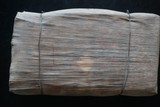
Puer Cooked
Understanding the Unique World of Puer Tea
Puer tea (also spelled Pu-erh or puerh) stands out as a unique and complex category in the world of tea. Many of the common "tea truths" often discussed by enthusiasts don’t always apply to puer. One of the defining characteristics of puer is that it’s typically pressed into shapes such as cakes or bricks, and sometimes even into mushroom shapes. Historically, this compressing process made transportation easier.
Each puer cake is made from a blend of tea qualities, following specific recipes often identified by a four-digit code. The primary distinction within puer tea is between cooked (shou) and raw (sheng) puer, each offering a different aging process and flavor profile.
The Unique Flavor and Benefits of Cooked Puer Tea
Cooked puer tea is known for its earthy, rich taste, often described as reminiscent of the forest floor, with fungal notes and a very dark hue. While this unique flavor may not appeal to everyone, those who enjoy it are passionate about it. If you love the feeling of earth between your toes or enjoy gardening, you’re likely to appreciate the deep, grounded taste of cooked puer.
This tea is created through a process known as pile cooking, which involves controlled composting. Cooked puer is also believed to offer several health benefits, including aiding digestion and helping the drinker maintain a slim figure. It’s especially recommended as a digestive aid after consuming meat-heavy meals.


Earth Moon 2000

Xiao Fa Tuo Cha (French Export)

Cooked Purple Meng Hai 2007

Cooked Plum

Cooked Chrysanthemum

Cooked Peony

Gu Shu Puer 1 oz.

Cooked Lotus 2009

Bee's Knees Bird's Nest

Sea Breeze

Cooked Kilo Brick 2005

Cooked Beauty

